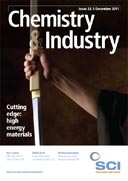Using carbon nanotubes that act like springs, skin-like pressure sensors have been developed by US researchers at Stanford University in Palo Alto, California. The sensors could be used in making touch-sensitive prosthetic limbs or robots, and also for medical applications like pressure-sensitive bandages as well as touch screens for computers (Nature Nanotechnology, doi:10.1038/nnano.2011.184).
The team, led by associate professor of chemical engineering, Zhenan Bao, has developed a transparent film of ‘nano-springs’ by spraying nanotubes in a liquid suspension onto a thin layer of silicone, which is then stretched. The nanotubes tend to land in randomly oriented clumps on the silicone, but when the silicone is stretched in different directions, some of the ‘nano-bundles’ are pulled into alignment in the direction of the stretching. When the silicone is released, it returns to its original shape but the nanotubes buckle and form the nano-springs, which can be stretched repeatedly.
To produce the sensor, two coated silicone layers are placed with the coatings face-to-face separated by a third silicone layer. The middle layer acts like a battery and when pressure is exerted on this silicon sandwich, the middle layer is compressed, thereby altering the amount of electrical charge that it can store. This change is detected by the two films of nanotubes, which act like the positive and negative terminals of a battery and transmit what the sensor is ‘feeling’.
The sensor can register pressure ranging ‘from a firm pinch between your thumb and forefinger to twice the pressure exerted by an elephant standing on one foot,’ according to team member Darren Lipomi. Unlike human skin, however, the sensor can be repeatedly stretched to more twice its original length, bouncing back to its original shape.
Earlier work by Bao’s group produced highly sensitive non-stretchable sensors that could detect pressures well below that exerted by the 20mg bluebottle fly carcass that was used to test the device. Current work is focused on bringing this level of sensitivity to the stretchable version.





